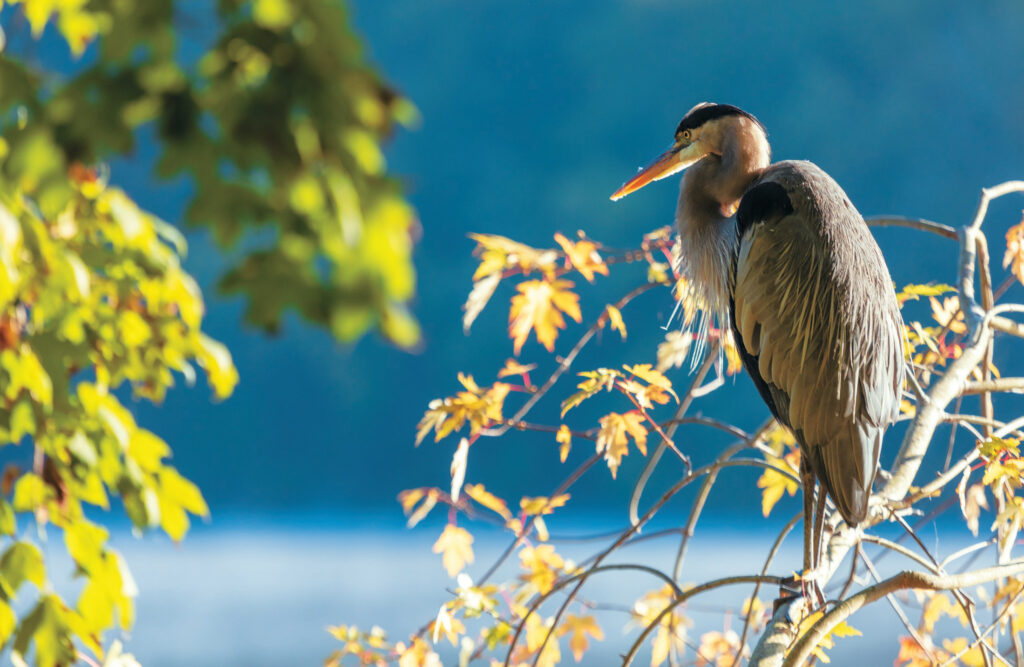“Great Blue Heron” by Robin Conover Canon 5D Mark IV EF 100-400 mm at 350 mm, 3.5-5.6 L lens ISO 400, fl6.3 at 1/320 second, handheld
I have to agree with the included quote by Alfred Stieglitz. It’s a simple concept but is the essence of being a photographer. Light is the most important element in any photograph; without it, we can’t see anything, and we can’t photograph anything.
The golden hours at sunrise and sunset create the best opportunities for natural light. The lower angle of light cast by the sun first thing in the morning and again just before sunset provides opportunities for great images to be made.
When I walked up on this great blue heron just after sunrise, it was perched on a limb that was relatively close to the shoreline of Radnor Lake in Nashville. The first light of the day defined the heron’s shape with backlighting while the cool shadows simplified the background, making the subject stand out even more.
I stayed for a few minutes to see what would happen as the sun rose. The exposure was tricky with such different lighting on the heron and the background. I metered on the sunlit portion of the green tree to the left to get a proper exposure.
Though the light was beautiful, you could argue that the tree limbs behind the heron are somewhat distracting. I tried to simplify the composition by moving my camera higher and lower and taking a few steps left and right, but there was no way to eliminate the leaves or limbs behind the subject.
Two things I always do when I’m composing an image that will immediately improve your photographs: Find good light, and isolate the subject from the background. The easiest way to isolate the subject is to simplify the background. Distracting elements behind your subject will weaken the composition and confuse the viewer’s eye.
Please share your images of the great light you have captured with us in the ongoing Shutterbug contest, “Summertime in Tennessee.”



